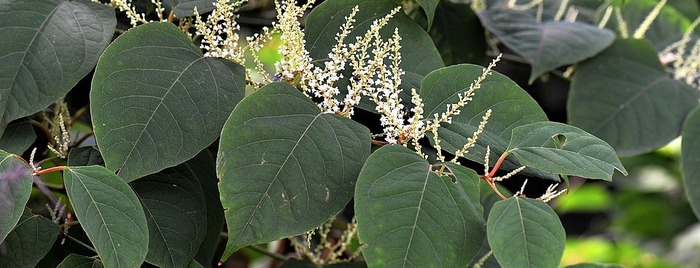
11 Oct, 2024/ by Surveyor Local /News
Gardeners know only too well the difficulties created by rapacious plants such as Japanese knotweed - it spares no other plants as it spreads around the location from which it was initially planted.
Non-gardeners have probably heard of Japanese knotweed, along with other fast-growing pest plants that can include the buddleia and the bamboo.
The Royal Horticultural Society (RHS) describes Japanese knotweed as “a weed that spreads rapidly”, which dies back in winter but spreads from their underground rhizomes to push new growth in the warmer seasons. It is this underground spread that becomes the problem for homeowners, because the shoots grow to a height of over 2 metres and suppresses all growth of the other plants in its vicinity.
As the name suggests, Japanese knotweed is a non-indigenous plant that was brought over from Asia by keen gardeners 200 years ago. The appeal for the plant came from the fast-growing element of its stems which produces luscious deep green leaves. The problem with the lack of understanding its nature and how it grows meant that it proliferated in gardens and parks and, as a result, has become a severely pernicious problem.
Why is it such a problem over and above it filling up the garden with its foliage and stems?
The fast-growing nature of Japanese knotweed means that it can seriously damage concrete and other hard structures within a building, with the most serious problems resulting in it impacting a home's structural integrity.
The issue is so severe that the Japanese Knotweed UK Heat Map developed and provided by Environet shows its stronghold in large swathes of the country. This means that it becomes critical that you know whether a home you are buying has Japanese knotweed or not - because the problem will need to be dealt with and managed after removal.
There are stories where a homeowner has gone to great expense to have their garden effectively dug up to remove the offending plant but it has nevertheless returned, which is why it's such a worry for prospective buyers.
In fact, the TA6 conveyancing form (the Property Information Form) now has a section on it where the seller must state whether Japanese knotweed is present within 3 metres of their property. The TA6 form is a legally-binding document, which means that a buyer has legal - and possibly financial - recourse if their response is found to be incorrect. So, the seller can only indicate “no” in the situation where they are positive that the plant is nowhere near their property.
Specialist firms such as Environet can provide an assessment for a fee for that peace of mind when answering the TA6 question, and their experts can be called in to remove the plant where found.
This is also why it is so important to order a suitable level of survey for a chartered surveyor to investigate any evidence not only of the plant's existence but any structural issues within the property boundaries that the plant's stems and rhizomes have caused.
At Surveyor Local, we only work with chartered surveyors who are members of the Royal Institution of Chartered Surveyors, ensuring the survey you get is always professionally delivered.
They will work hard to identify all kinds of problems, including the impact of plants like Japanese knotweed, and their possible causes, as well as providing guidance of possible remedial action.
Where a survey does reveal any issues with a property, the buyer is then armed with knowledge that can allow them either to renegotiate the price, have the seller carry out the repairs or pull out of the purchase altogether.
That's where it is really worth contacting Surveyor Local!
Call to get your no-obligation survey quote started, or to discuss your concerns with the acquisition of your planned property.
Or you can get a quick quote, using Surveyor Local's easy-to-use quote generator. Simply input your name, postcode, email address, phone number and an approximate value of the property (usually the agreed price), and we'll give you an instant quote for the work (with an email copy).
We'll do the rest once you confirm your acceptance of the quote.
